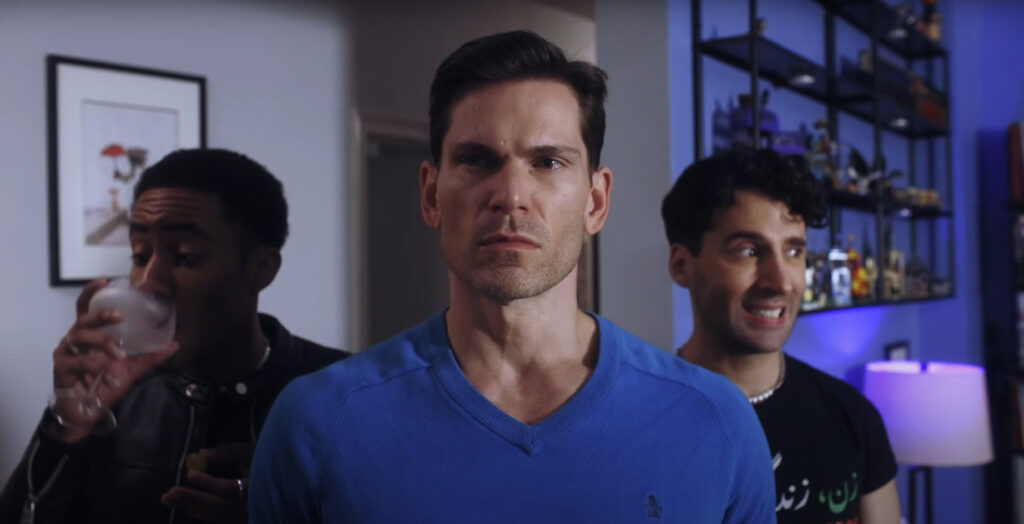Pennsylvania Ballet performed three dances by three different choreographers for their short November 8-11 season at the Merriam. All three works had death as their theme, at least in part. All three works were performed with recorded music.
Jiri Kylian’s Petite Mort is a classic ballet by the master choreographer from 1991. It was created for the bicentennial of Mozart’s death. The recorded music uses movements performed by Mitsuko Uchida and the English Chamber Orchestra under the direction of Jeffrey Tate. The costumes and scenery were courtesy of Boston Ballet. Petite Mort is an acknowledged masterpiece which has more than withstood repeated performance by major dance companies of the world. The work has many unexpected beauties well worth experiencing. Regrettably, the recorded music was played loudly, often uncomfortably so, which detracted from the dancing onstage. The dancers were all exceptional.
Next on the program was the world premiere of Andrea Miller’s Evenings. Miller stated that the work is meant to honor the memory of her recently deceased father. Pennsylvania Ballet is to be commended for including the essay, “See the Music,” by Tom Turner. Mr. Turner skillfully explains the genesis and architecture of the three works on the program, filling in the process and reasoning for each work. Turner tells us that Miller created her piece during the one-year anniversary of her father’s death. She used music from Arvo Part’s Fur Alina, and his Cantus in Memory of Benjamin Britten. Again, the music was at times painfully loud, especially during the one-note insistent striking of one piano key. Miller is said to have allowed her dancers free creative expression. This permission by the choreographer resulted in wonderful movements. The lighting, or lack of it, made it extremely difficult to see exactly what those movements might have been. Narrow spotlights, and shadowy landscapes allowed only glimpses of the action onstage. If the choreographer rethinks the presentation so that it can be better seen, Evenings may become a lasting work. Andrea Miller’s CV would be enviable in an artist twice her age, since she is a Guggenheim Fellow, as well as owning fellowships from Sadler’s Wells and the Princess Grace Foundation. She instructs at prestigious universities worldwide, creates works to be performed at the most celebrated institutions, and is a creative force in commercial advertising. Clearly, we will hear and see many of her works for years to come.
The third and final work of the evening was a world premiere by Corps de Ballet member and choreographer Russell Ducker titled This Divide. Mr. Ducker settled upon using Mr. Branca’s music only after reading Mr. Branca’s New York Times obituary in May 2018. According to the obituary, “Mr. Branca’s compositions are meant to be performed at high volumes.” That they were. However, a single, insistent key loudly played lasted only a short time, and was followed by more linear music. Lighting was bright enough for the dancing to be seen.
Mr. Ducker’s work is an amazing work for a large ensemble, with several costume changes during the work. A main theme was the meeting of two men, who parted, then apparently went off together, closing the door behind them, finally shutting out the revelers who danced throughout the piece. The crowd, however, sat on the steps outside the closed door. Curtain. Many thought the choreography was informed by Le Sacre du Printemps, Visconti’s Death in Venice, Martha Graham, or even an orgiastic house party in Point Breeze. Audience acclaim was exceptional. We hope to see more work from Mr. Ducker.
Pennsylvania Ballet will present The Nutcracker at the Academy of Music from December 7 through 31. Giselle follows March 7-17, then an Igor Stravinsky Triple Bill April 4-7, and another triple bill May 9-12. For information, visit www.paballet.org .
PHILADELPHIA PRIDE MARCH AND FESTIVAL
Join us for the Philly Pride 2024: Be You, featuring the largest rainbow flag and a vibrant festival. Discover community, celebration, and support!






